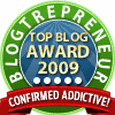Leaders face unprecedented demands to manage extreme pressures, while maintaining some semblance of effectiveness and well-being. Add to that the stunning complexity of the global economy, and many leaders are short of breath and short of hope. Yet the picture is far from hopeless. There’s a striking capacity within the human system to transform stress and regain lost energy and vitality.
This has been the focus of HeartMath for the past 15 years. In the mid-1970s, I developed a strong desire to learn how to enhance performance while reducing stress. I was an actor, singer and dancer in New York, and I knew that managing my emotional state was key to my success. If I was too nervous, preoccupied or arrogant, my performance suffered. As I learned to transform emotion and act more from my heart, my performance improved dramatically.
In 1980 I met Doc Childre, founder of HeartMath, and realized he had addressed the problem of stress on the personal, team, and organizational levels. I became inspired by the prospect of helping people learn to transform the daily stresses that burden our spirits and rob us of the passion to care.
Stress affects all aspects of life. Just as the boundaries between personal and work life grow blurry, so does stress carry over from one event to the next. We recognized that to reduce the stress overload, we needed to understand the stress impact on human physiology and organizational effectiveness and create a simple set of valid tools to apply before, during, or after stressful experiences.
From research, we know that stressful emotions—such as anxiety, time pressure, and feeling overwhelmed— create chaotic patterns in the rhythms of the heart, which are transmitted to the cortical areas of the brain and other parts of our bodies, diminishing our effectiveness, well-being, and performance. Changing this stress response changes the physiology. This can be done in the moment. When you give people practical tools to transform the stress response and to be more supportive of colleagues, you can achieve remarkable improvements in staff and customer retention and satisfaction.
Commit to reducing stress as part of your performance and talent management. Through the 1990s, many leaders prided themselves on being “stress athletes,” believing they could forever withstand the barrage of stress and emotional turmoil unscathed. Today we have a healthier respect for the effects of chronic stress. Which part of business is not adversely affected by stress? We see it manifest in soaring healthcare costs; in the alarming rise in use of medications for sleep and anxiety disorders; in the loss of key employees who aren’t willing to ruin their health and vitality in an unappreciative culture; and in the defection of key customers annoyed by a lack of responsiveness to their concerns.
A sensible program for transforming stress can be justified in four ways: more customer satisfaction, less staff turnover, reduced healthcare costs, and improved staff well-being and performance.
All managers know they need to get better at execution and innovation. Many see the link between stress, performance, and innovation. Staff retention is also a big concern, as well as health care costs. Several companies have achieved seven-digit cost savings within the first year as a result of implementing HeartMath’s stress programs. As you give your staff tools to neutralize stress, you gain a more efficient, effective, and inspired workforce.
Many organizations have seen reductions in fatigue, insomnia, anxiety and depression, as well as improvements in employee productivity, communication, and satisfaction.
To enable people to recognize and transform the stress response quickly, we developed interactive exercises (built on the principle of learning to regulate the heart’s rhythmic patterns) and a handheld Personal Stress Reliever. Many organizations now provide these tools to staff to boost performance and health while reducing anxiety.
Bruce Cryer is President and CEO of HeartMath LLC, an innovative performance improvement firm. HeartMath works with several top 10 U.S. hospital systems, as well as Britain’s NHS, and its research-based program has received the Management Innovations Award from the American College of Healthcare Executives. Bruce is on the faculty of several leadership programs including the Stanford Executive Program and the Center for the Health Professions at UCSF. His article, “Pull the Plug on Stress,” was published in the Harvard Business Review. He is the co-author (with Doc Childre) of “From Chaos to Coherence: the Power to Change Performance.”
Copyright © HeartMath. Since 1991 HeartMath has been dedicated to decoding the underlying mechanics of stress. HeartMath is internationally recognized for their solutions to transform the stress of change and uncertainty, and bring coherence and renewed energy into people’s lives. Research and clinical studies conducted by HeartMath have examined emotional physiology, heart-brain interactions, and the physiology of learning and performance. Through their research they have demonstrated the critical link between emotions, heart function, and cognitive performance. HeartMath’s work has been published in numerous peer-reviewed journals such as American Journal of Cardiology, Stress Medicine, and Preventive Cardiology, as well as business journals such as Harvard Business Review and Leadership Excellence. HeartMath’s organizational clients include NASA, BP, Duke University Health System, Stanford Business School, Redken, Kaiser Permanente, Boeing, and Cisco Systems, as well as dozens of school systems and thousands of health professionals around the world. To learn more about HeartMath, go to www.heartmath.com.

 RSS Feed
RSS Feed































